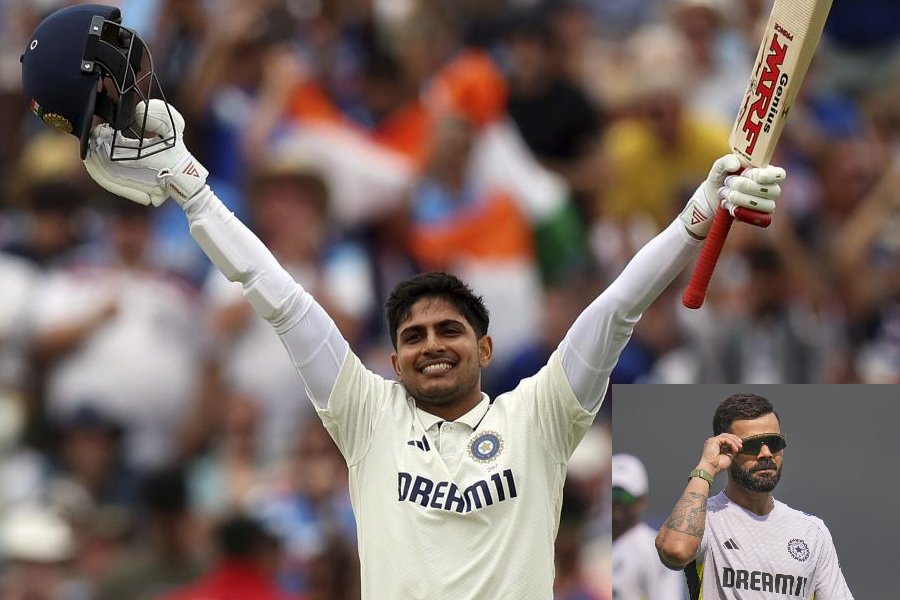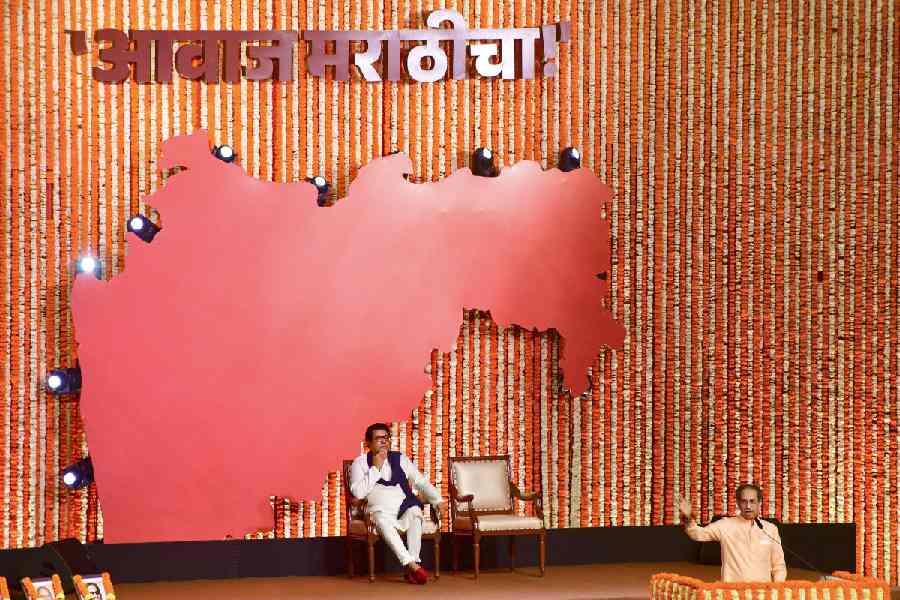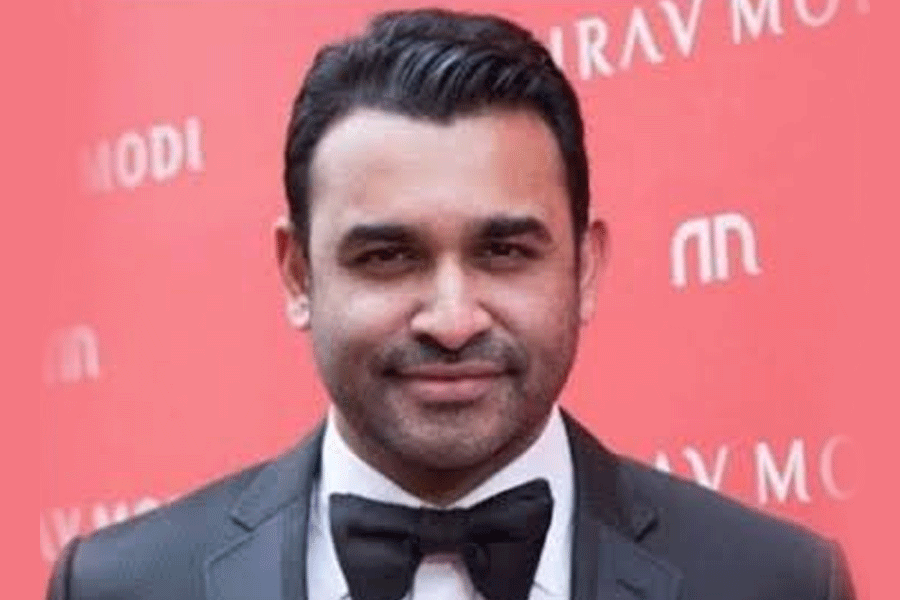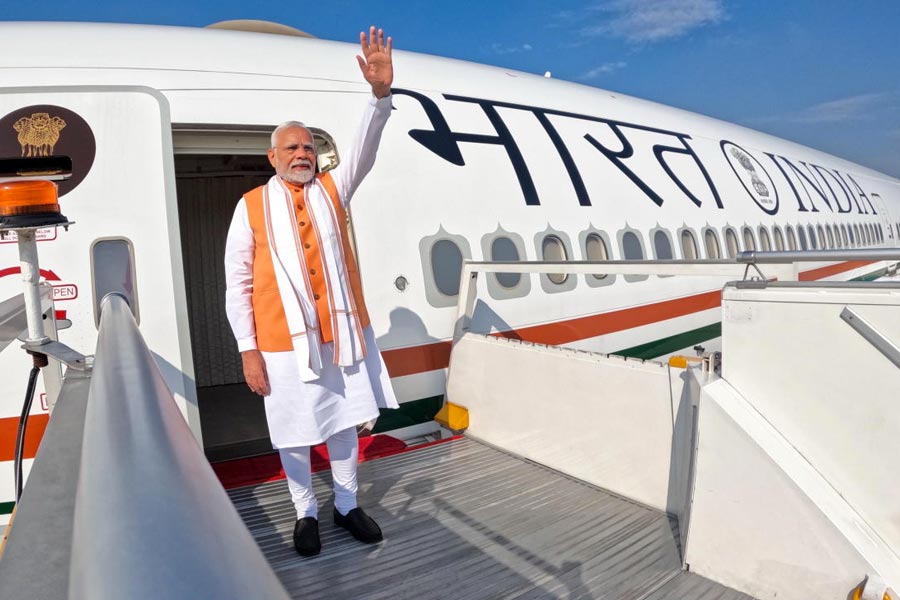 |
Bihan Music, the city-based CD manufacturer, has been for quite a few years producing Hindustani classical recordings of past masters and lesser-recorded maestros. Among its seven new CDs there is, to start with, Inheritance (Rs 200), which comprises a re-release of the late Agra gharana maestro Sharafat Hussain Khan’s 1971 Gramophone Company LP (ECSD 2495) along with a part of his brother-in-law Yunus Hussain Khan’s lecture demonstration on some ragas of the Kalyan group (not the Kalyan thaat as in the sleeve notes). Sharafat Hussain was the last genuine star of Agra Gharana and those who have not heard him will get a sample of the magnificent singing they have missed on this CD. Listeners should note that the second chhota khayal is in Hussaini Kanada and the third is Nat Kamod and not Sughrai and Kamod as printed below the sleeve notes. The rare Nat Kamod composition (newar baje) has always been sung in the slow-medium tempo and as a bada khayal. Sharafat Hussain created history of sorts by singing it as a fast-tempo chhota khayal at which the opening taan becomes difficult to execute, though not for him, of course. Yunus Hussain’s part of the CD opens with the Ustad saying, “After Anandi Kalyan and Shyam Kalyan, I will now present Gorakh Kalyan” (in Hindi). This indicates that the first part is missing. The Shyam Kalyan does appear later with the Ustad saying, “After Anandi Kalyan, I present Shyam Kalyan”. This is rather funny, to say the least. The Ustad demonstrates raga movements, explains their ingredients and sings compositions in them.
Satya Kinkar Bandopadhyay (1899-1980) was a well-known singer, sitar player and teacher of the city. The CD, The Maestro of Bishnupur Gharana (Rs150, featuring him presents bada and chhota khayals in Yaman and Bageshree. Though he represented the Bishnupur Gharana, this must have concerned only the dhrupads he sang. For, I had a knowledgeable khayal singer listen to a clip of the CD over the phone and asked him to identify the singer. He failed, but said “lekin Agra Gharana hae”. Such, it seems, had been the impact of Ustad Faiyaz Khan on Calcutta musicians in the first half of the 20th century.
Satya Kinkar’s son and pupil, Amiya Ranjan Bandyopadhya, today sings bada khayals in the faster tempo of the traditional style with the original angs and silsila intact. The two CDs Vibrations (Rs 150) and Colours Of Melody (Rs 150), featuring him show the evolution of his style over the years. The influence Amir Khan earlier had on his badhat is evident in the bada khayal in Komal Rishav Asavari and the chhota khayal in Sarawati shows Amir Khan’s influence in the formatting (Colours of Melody). Some similarity with his senior contemporary A. Kanan is present in the Nayaki Kanada khayals on this CD and the Lalit and Mian Malkar khayals on the other one (Vibrations) as well.
Chinmoy Lahiri, among the best-known Calcutta-based khayal singers in the third quarter of the 20th century was a great experimentalist and created a style of his own. He created quite a few ragas as well; most of these were a little odd sounding. In the CD, Creation (Rs 150)you can hear two of these: Prabhati Todi and Rupkalyani. However, the sound quality is not good and Chinmoy Lahiri’s voice is not at its best. The recording was possibly made in the closing years of his life, for his proficiency in fast sargams and taans are missing on it.
Buddhadeb Dasgupta is the seniormost sarod player of Calcutta today. The CD, Parampara (Rs 100) featuring him and son Anirban Dasgupta, a live recording, shows the son is ready to take over the mantle. In fact, it is difficult to make out that there is not one but two sarods playing on the CD most of the time.
The CD, Adhara Madhuri(Rs 100) featuring Bengali tappas and other old songs by Tora Basu is rather unimpressive as the singer’s pitch wavers slightly in most of them and the tappas omit the slow jamjama or gitkari ornamentations that characterise the genre.










